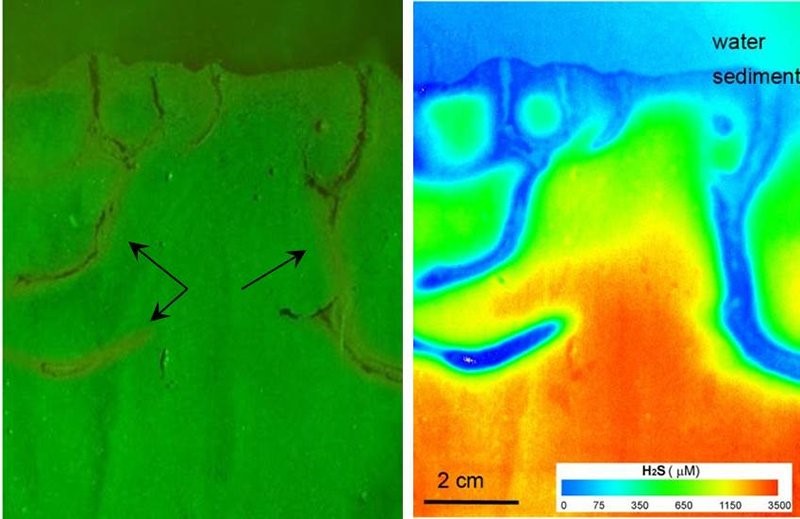As part of their research program in sedimentary biogeochemistry, Profs. Qingzhi Zhu, Robert C. Aller, and their students develop and utilize a range of sensors that allow high resolution 2-D imaging of dissolved constituents in marine sediments. 3-D reconstructions of compositional patterns are obtained by tomographic interpolation of the 2-D images. Measuring these patterns and relating them to larger scale behaviors of an ecosystem, for example, the mass flow of nutrients from sediments to overlying water in an estuarine environment, are challenging practical and theoretical problems. One of their unique sensors reveals the complex, time-dependent distributions of H2S (hydrogen sulfide), an important metabolite of anaerobic bacteria in marine sediments and a central component of the sulfur cycle (Zhu and Aller, 2013, Mar. Chem.). This sensor and its potential applications have recently been featured by the National Science Foundation in its major research highlights (http://go.usa.gov/yAT5). Previously available hydrogen sulfide detection methods were limited in their capabilities, as there wasn’t a sensor able to detect both two-dimensional, in-situ distributions of hydrogen sulfide and its dynamics in the environment. The sensor directly demonstrates how the activities of relatively large animals such as worms and clams that live in marine sediments impact H2S distributions, sulfide mineral formation conditions, and the dynamic biogeochemical interactions associated with coupled anaerobic and aerobic decomposition of organic matter (Figure 1).

Worm burrows (from the common ragworm Nereis diversicolor) in Flax Pond sediment (left; arrows) and the simultaneous image of hydrogen sulfide concentrations (right). Ventilation of burrows with overlying water oxidizes H2S in surrounding sediment, creating complex, dynamic concentration distributions.



